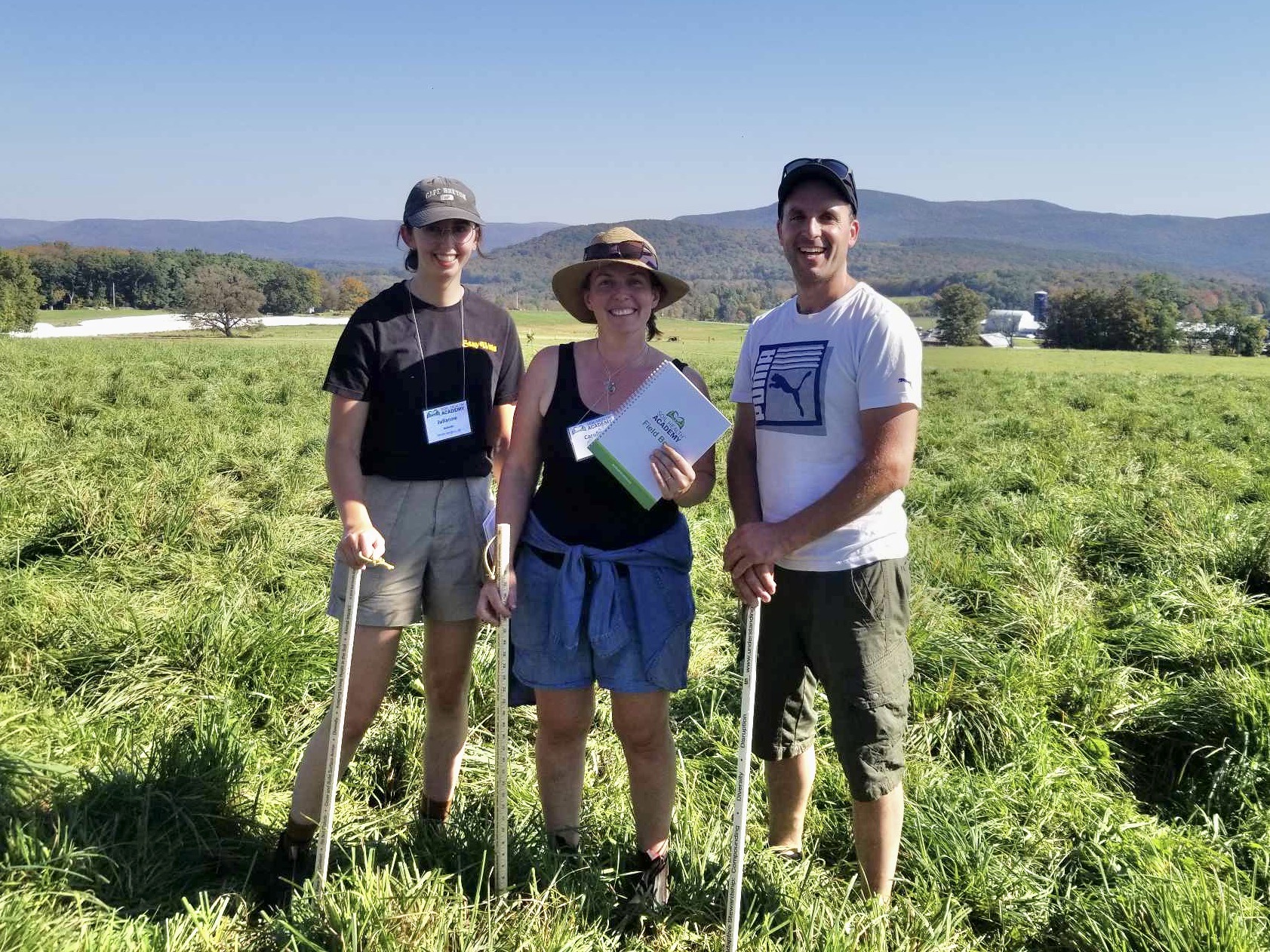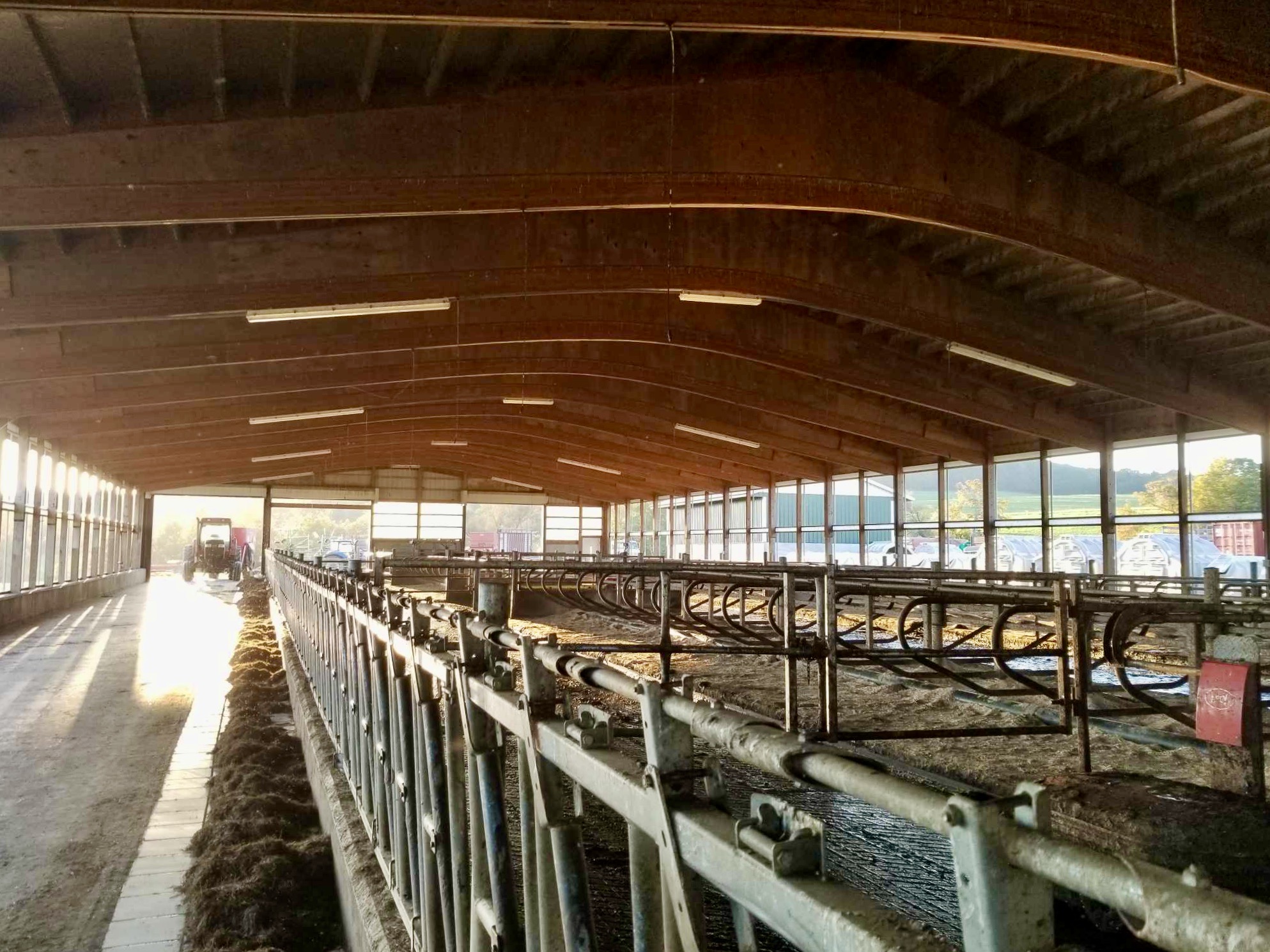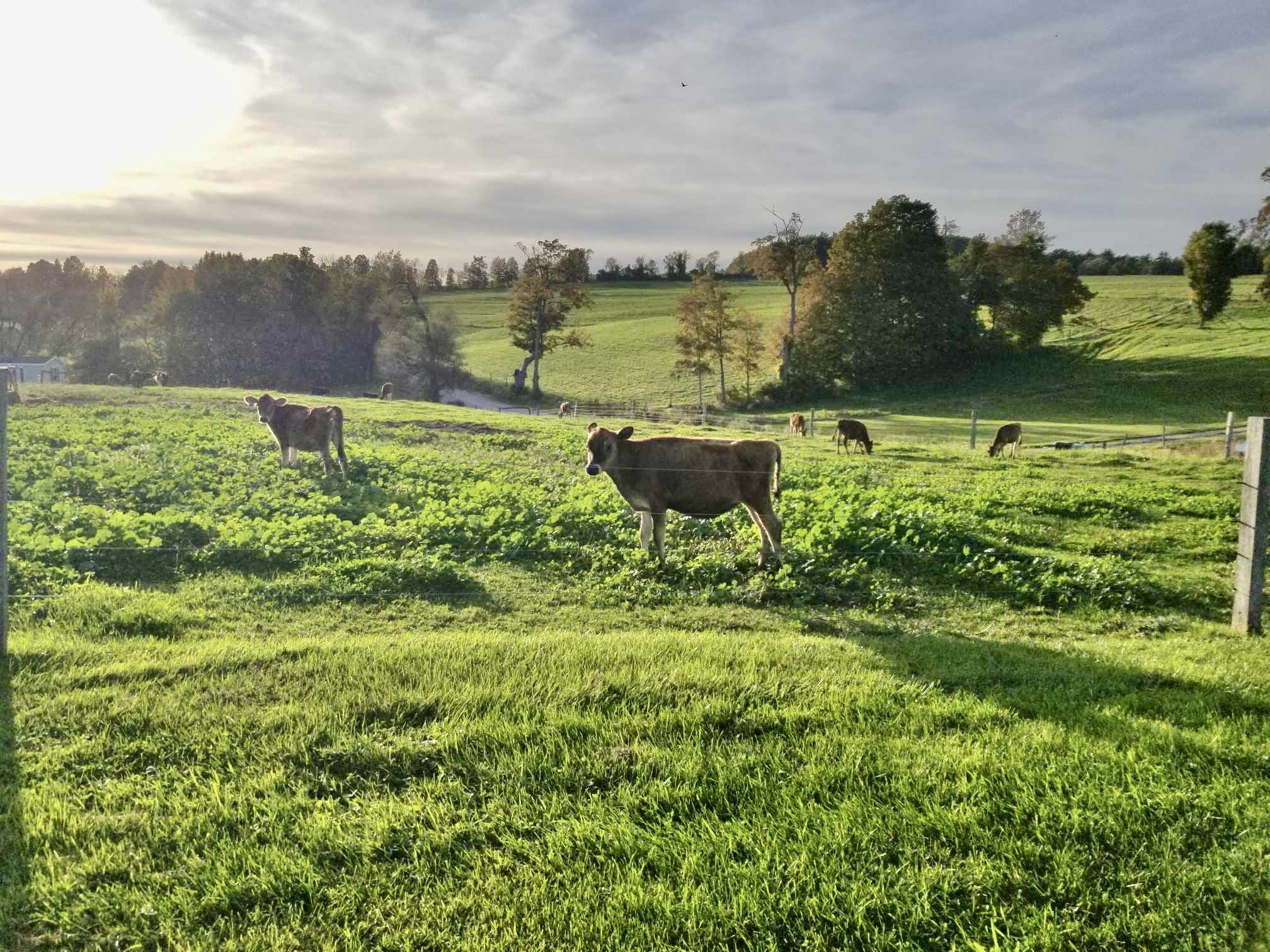Caroline Lavoie is a member of the Régénération Canada team. She is the Project Manager for Dedicated Dairy Farms, a climate transition project for the Quebec dairy industry, in collaboration with General Mills and Logiag. She is also involved in her family’s organic dairy farm in Bas-St-Laurent.

In November 2019, I found myself on the other side of the planet, at Yandoit Farm, in the middle of the Australian countryside. I was part of a cohort of around twenty eclectics who had come to learn the concepts and applications of permaculture (and the joys of spring camping) over a two-week period. From these fourteen intense days of training, I came away with a head full of inspiration, ideas and projects to transpose onto the plot of land awaiting my arrival in Quebec a few months later. In spite of my enthusiasm, there was still an uneasy feeling in the back of my mind: how could I, as a proud descendant of five generations of farmers, combine permaculture and its principles with modern dairy and livestock farming?
Life has more than one twist and turn, and now, almost exactly four years later, I find myself in New York State attending a course in regenerative dairy production offered by Soil Health Academy. The aim is to learn more about how regenerative farming practices can be applied to the dairy sector and to bring that knowledge to our Dedicated Dairy Farms project in Quebec. To this end, I am also accompanied by Pascal Viens, from Ferme Vimo, and Julianne Audette, agr., from Logiag‘s agronomy team.
Aligning the production model
From the moment I set foot on the host farm, owned and operated by Eric and Jamie Zeihm, I could tell they were operating within the mainstream production system. Indeed, apart from differences in supply contracts, this company, like all Quebec dairy farms, relies on volume, productivity and technology to ensure profitability.
High Meadows of Hoosick is a certified organic dairy farm with a herd of 260 cows and 100 replacements. Significant investment in infrastructure has been made to house the animals in a free-stall barn with a Dairymaster Swiftlo Swing 16 milking parlour. The farm has 300 acres under cultivation (of which 260 are pasture) and 600 leased acres for forage production and heifer grazing. The owners’ aim is to continue to optimize the grazing portion of the land, and to use groups of animals such as dry cows and heifers to “lift the land” to the point of no longer needing to till the soil for annual cropping. Eric is even considering the possibility of milking groups nearing the end of lactation just once a day. This would facilitate the grazing of plots further away from the barn.
At first glance, it’s easy to think that the motivation behind the company’s objectives is primarily environmental. However, Eric asserts that the optimal use of pastures is a guarantee of the financial health of his farm, for which he has profitability obligations as part of his supply contract with the company that processes their milk. Eric’s words are certainly food for thought given the current economic climate.

Happiness is in the… diversified prairie
On a dairy farm, there are two, symbiotic bacterial systems that need to be stimulated for healthy functioning: the soil and the cow’s rumen (the first compartment of the ruminant foregut, which accumulates a large quantity of food prior to rumination and forms a fermentation chamber).
Historically, alfalfa was selected as the forage plant of choice for its ability to dry quickly. However, the vast majority of North American dairy farms have gradually opted for conservation methods based on fermentation at higher moisture levels. This makes it possible and beneficial to nurture greater diversity in the field by including other legumes, grasses and even herbaceous species. Indeed, a diet rich in diversified forage species contributes to a better nitrogen/carbon balance in the soil and a lower protein ration for the herd, which in turn promotes better rumen health in cows.
And where do genetics fit in?
 An animal that is able to progress in a system with limited inputs will excel in an environment that has more to offer. Therefore, if form determines function, fertility should be prioritized as the first criterion for genetic selection. The fertility of a dairy cow is a sign of longevity (and profitability) in our herds. However, the current trend is for conformation and dairy performance to take precedence, which has contributed to an increase in the weight of dairy cows, particularly Holsteins.
An animal that is able to progress in a system with limited inputs will excel in an environment that has more to offer. Therefore, if form determines function, fertility should be prioritized as the first criterion for genetic selection. The fertility of a dairy cow is a sign of longevity (and profitability) in our herds. However, the current trend is for conformation and dairy performance to take precedence, which has contributed to an increase in the weight of dairy cows, particularly Holsteins.
According to a study by Lactanet, the maintenance requirements of Holstein cows have risen steadily since the late 1990s. This has led to an increase in the amount of feed required to meet the animals’ metabolic needs, which in turn has led to an increase in operating costs for dairy farms. Rethinking genetic selection in our dairy herds offers opportunities to reduce feed requirements and crop acreage, as well as improving herd longevity and the economic viability of dairy farms.
A question of context
I’ll end this article with the sentence that struck me most this week: We mustn’t let our context become an excuse for not improving. North of the 49th parallel, when it comes to changing our farming practices, the tendency is to invoke our climatic conditions or more restrictive environmental regulations to justify keeping with the status quo. However, my experience at High Meadows of Hoosick leads me to believe that it is now possible, and will no doubt soon be necessary, to re-evaluate what our context can offer us in dairy production, and to implement farming practices that promote soil health and animal welfare in order to ensure the economic viability of our dairy farms.
And since this trip to our neighbors to the south, I’m beginning to sincerely believe that my farming heritage in dairy production can integrate the principles of ecosystem regeneration.





